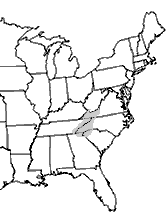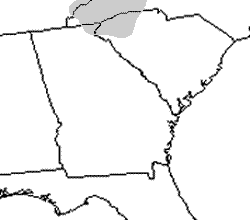Jordan’s Salamander (Plethodon jordani)



Photos by J.D. Willson unless otherwise noted
| Description: Jordan’s salamanders range in size from 3.5 to 5 in (9-12.5 cm) with a record of 7.5 in (18.4cm). Their basic body color is gray or black but they may have red legs or cheek patches. Generally, individuals from the southern Appalachian Mountains have red legs and individuals from the Smokeys and central Blue Ridge of North Carolina and Tennessee have both red legs and red cheek patches. In other regions they are solid gray or black. Coastal grooves are present and usually number 16. They are generally smaller and more slender in body form than the similar slimy salamanders (P. glutinosus complex) and lack white flecking.
Range and Habitat: Jordan’s salamanders are woodland salamanders that are also mountain dwellers. They are found in the Appalachian Mountains from Virginia to northern Georgia and South Carolina. They are found from 700ft elevation to the summits of humid, forested areas in the Appalachian Mountains. This species is one of the most common woodland salamanders in the Appalachians. Habits: Jordan’s Salamanders are most commonly found under rock and logs in moist forests. They are active at night when they emerge to hunt insects and other invertebrates. They breed in the fall and do not have an aquatic larval stage. Notes: Recent systematic work has split this species into several closely-related species. P. shermani is found in the Southern Appalachians of our region, P. metcalfi is found in the Smokeys and central Blue Ridge of North Carolina and Tennessee. Conservation Status: Red-legged salamanders are common within their range and are not protected in Georgia. Pertinent Reference: Account Author: Andy Howington, University of Georgia – revised by J.D. Willson |
